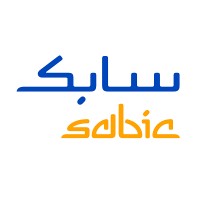Company Cyber Security Posture
NANA
NA Company Details
NA
NA
NA
NA
NA
NA
Scan still pending
NA
NA
Between 200 and 800
This score is AI-generated and less favored by cyber insurers, who prefer the TPRM score.
 NA Global Score
NA Global Score.png)

Company Scoring based on AI Models
| Model Name | Date | Description | Current Score Difference | Score |
|---|---|---|---|---|
| AVERAGE-Industry | 03-12-2025 | This score represents the average cybersecurity rating of companies already scanned within the same industry. It provides a benchmark to compare an individual company's security posture against its industry peers. | N/A | Between 200 and 800 |
Company Cyber Security News & History
| Entity | Type | Severity | Impact | Seen | Url ID | Details | View |
|---|
Company Subsidiaries

NA
Access Data Using Our API

Get company history
.png)
NA Cyber Security News
Nan Ya Plastics USA Data Breach: Here's What Was Exposed
Data breach at Nan Ya Plastics USA exposed names, SSNs, and more. Numerous Texans affected. Take steps to protect your info.
Taiwan Calls on US Support to Defend Banks Against Hacking
Taiwan's financial system undergirds a $760 billion high-tech economy, but its vulnerability to advanced hacks has raised fears of a ...
Taiwan’s major oil refineries struck by malware, causing chaos at gas stations
The attacks on CPC, FPCC, and also Powertech Technology – a Taiwanese circuit packaging and testing company that reported a ransomware outbreak ...

NA Similar Companies

ICI Paints
ICI is now part of AkzoNobel, the world's largest coatings manufacturer, the number one in decorative paints and performance coatings, and a leading supplier of specialty chemicals developed for a wide range of markets. ICI’s businesses - National Starch and ICI Paints - serve diverse consumer a

AkzoNobel
Since 1792, we’ve been supplying the innovative paints and coatings that help to color people’s lives and protect what matters most. Our world class portfolio of brands – including Dulux, International, Sikkens and Interpon – is trusted by customers around the globe. We’re active in more than 150 co

Perusahaan Perseroan (Persero) Perkebunan Nusantara VII
State owned company that drive the Sawit Palm Oil, Natural Rubber, Tebu Cane and Tea : Plantation & Mill State owned company that drive the Sawit Palm Oil, Natural Rubber, Tebu Cane and Tea : Plantation & Mill State owned company that drive the Sawit Palm Oil, Natural Rubber, Tebu Cane and Tea : Pla

Uralkali
Uralkali is one of the largest producers and exporters of potash, an essential component for the growth and development of all living organisms. Uralkali in numbers: • 5 mines • 7 ore treatment plants • over 21,000 employees • among the top 15 employers in Russia We develop the Verkhnekamskoye

SABIC
SABIC is a global leader in chemicals headquartered in Riyadh, Saudi Arabia. From making cars and planes more fuel-efficient, to helping conserve the world’s water supply and enabling colorful smartphone cases, we find solutions to the challenges of today to help our customers achieve their ambition

UralChem
UralChem is a leading producer of nitrogen and phosphate fertilizers in Russia/CIS with production capacities of over 2.7 million tonnes of ammonium nitrate, 2.2 million tonnes of ammonia, 0.8 million tonnes of MAP and DAP, 0.8 million tonnes of complex fertilizers and 0.5 million tonnes of urea. Ur

Frequently Asked Questions
Explore insights on cybersecurity incidents, risk posture, and Rankiteo's assessments.
NA CyberSecurity History Information
How many cyber incidents has NA faced?
Total Incidents: According to Rankiteo, NA has faced 0 incidents in the past.
What types of cybersecurity incidents have occurred at NA?
Incident Types: The types of cybersecurity incidents that have occurred include .
Additional Questions
What Do We Measure?
















Every week, Rankiteo analyzes billions of signals to give organizations a sharper, faster view of emerging risks. With deeper, more actionable intelligence at their fingertips, security teams can outpace threat actors, respond instantly to Zero-Day attacks, and dramatically shrink their risk exposure window.
These are some of the factors we use to calculate the overall score:
Identify exposed access points, detect misconfigured SSL certificates, and uncover vulnerabilities across the network infrastructure.
Gain visibility into the software components used within an organization to detect vulnerabilities, manage risk, and ensure supply chain security.
Monitor and manage all IT assets and their configurations to ensure accurate, real-time visibility across the company's technology environment.
Leverage real-time insights on active threats, malware campaigns, and emerging vulnerabilities to proactively defend against evolving cyberattacks.




